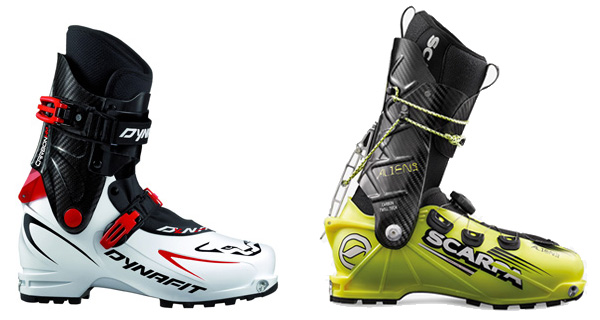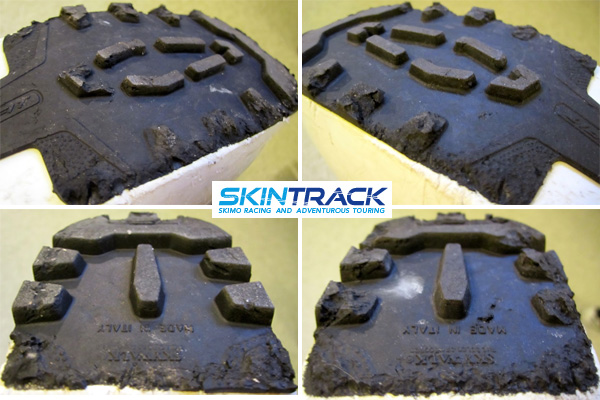Dynafit TLT 6 Mountain Boot quick overview:

- Usual full price: $749.95 USD
- Weight: 1225g per boot (size 27.5)
- Cost per gram: $0.31 / g
- Pros: Light, comfortable, easy touring, stiff
- Cons: Yet to find out
- Suitability: Ski touring, ski mountaineering
- How we go it: Paid prodeal price (disclosure notices)
Bottom line:
A clear improvement from the Dynafit TLT 5. The buckles work better, the toe box has more space for wide feet, the boot is stiffer, and it still walks and climbs well.
Photos:
Here are some photos also of my old TLT 5s for comparison.

Product description and How we tested it:
I got Dynafit TLT 5 boots and thoroughly abused them for two full seasons. The cuff rivets are working loose, the lower buckle has all but fallen off (cord replaced the original wire long ago), and the shell is plain beat up. That’s not to say that the boots didn’t serve me well or performed up to expectations, they just saw a lot of use. However, I was pretty excited to try out a shiny new pair of TLT 6 Mountain boots.
The TLT 6 address several complaints about the TLT 5. The toe box has been widened to allow a little more space for the metatarsals to expand while walking. This is a noticeable difference for me. I should probably be in a size 29 shell but opted for the 28.5 “performance fit” in the TLT 5 and stayed at the same size when I upgraded to the TLT 6 (BSL is the same).
With the new version, I have experienced no metatarsal pain. The toes are still a bit tight but a small punch will hopefully solve that for me. The metatarsal flex zone was eliminated, probably saving a bit of weight while improving stiffness and very insignificantly affecting walking. Simpler is better.
The upper buckle retains the classic Dynafit style with one throw to lock the cuff into ski mode but a double hinge sets the buckle closer to the cuff to keep it from basing on rocks. With the buckle closer to the shell, I can also now tuck my pant collar over the boot top to keep snow out. The lower buckle has been beefed up significantly and no longer pops open while post-holing (or just randomly while skinning). The wire is permanently attached so no risk of smashing it off.
The boot comes with two pairs of removable tongues: soft and hard. I have only carried the hard tongue. And if I’m not worried about stiffness or want to be quick, I just go without a tongue altogether.
I have put just shy of 10,000m vertical ascent and descent (and a bit more lift served descent) into the boots and couldn’t be happier. They drive fatter skis (196cm Huscarans) and still feel good doing jump turns on skinny skis in steep terrain or scrambling on rocks. The TLT5s worked great but the improved TLT 6 is worth the upgrade.
Crampon compatibility seems similar to the TLT 5, with BD Sabretooth Clip, Grivel Air-Tech Strap, and CAMP Race 290 Dyneema crampons all working well.
The TLT5 and now the TLT6 are available in both a “Mountain” and “Performance” model. The Mtn version has a softer plastic cuff while the Perf model has a carbon fibre cuff. The weight difference seems negligible but carbon fiber appears to be somewhat stiffer. As I am not a particularly talented skier, nor skiing not particularly spectacular terrain, stiffness is not a huge concern for me so the carbon version was not worth the extra cost. Others may disagree.
On the downhill, the TLT 6 is comfortable and with the tongue in way stiffer than I need (more so than the TLT 5 I think). On a bigger ski, without the tongue, you can definitely feel the shell flex.
Pros:
- Significant upgrades to the TLT 5. (Buckles, toe box)
- Lightweight boot that is stiff and walks well!
Cons / What can be improved about this product:
- Tongues are a bit of a hassle to get in and out.
- Ice can accumulate between the cuff and the liner on the laces which jam up when trying to lock into ski mode.
- I don’t have any great suggestions for improvements so it is hard to call these “cons”. Merely limitations based on the design.
Product Specs:
- Weight: 1225 grams per boot
- Materials: Grilamid / Pebax
- Size: 25-30.5 (Available in half-sizes but the shell breaks on the full size with half sizes happening in the liner)
Online stores that carry Dynafit TLT 6 Mountain boot:

- $749.00 at Skimo.co
- $749.95 at Backcountry.com
- $749.95 at CampSaver.com
- $749.95 at OMCgear.com




